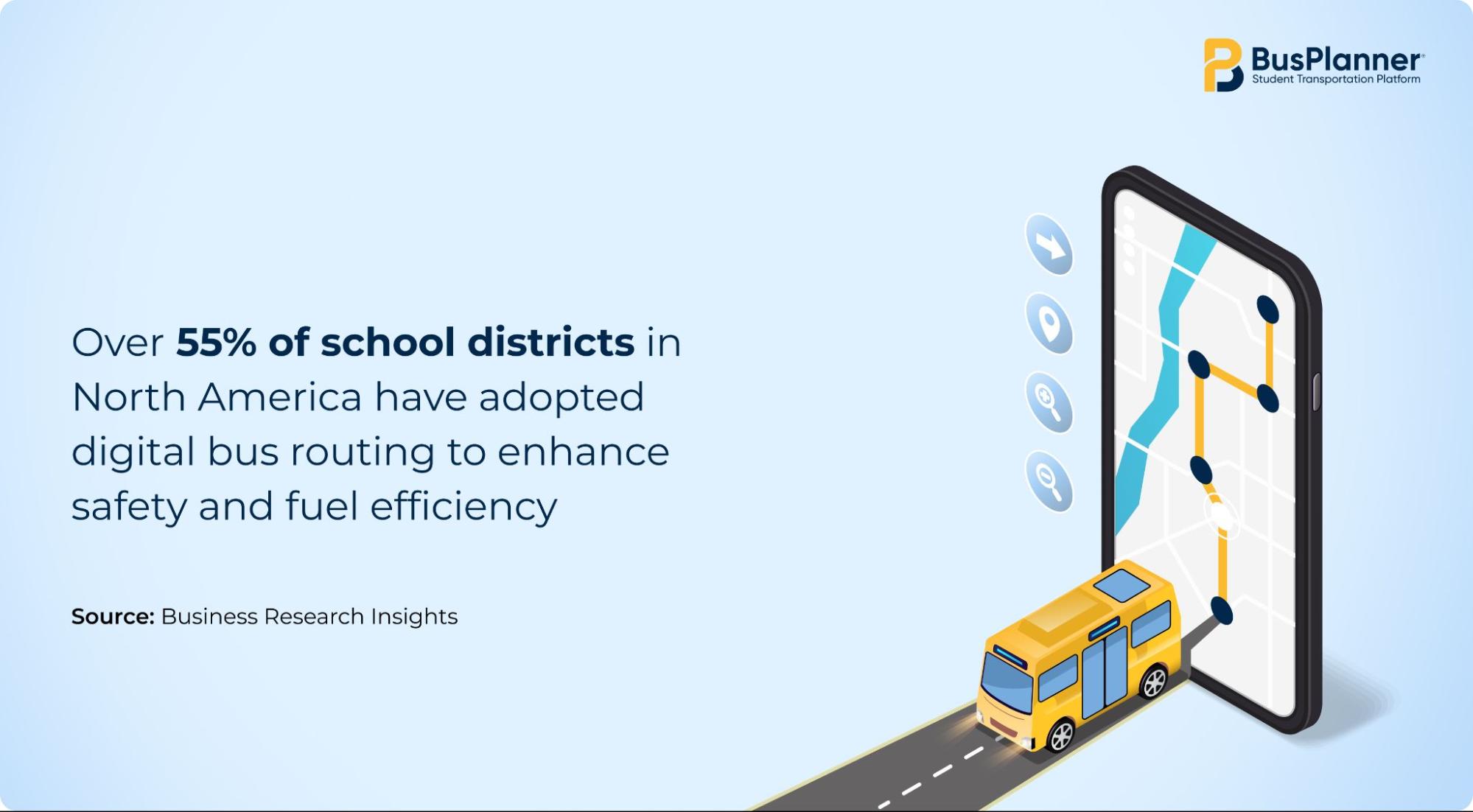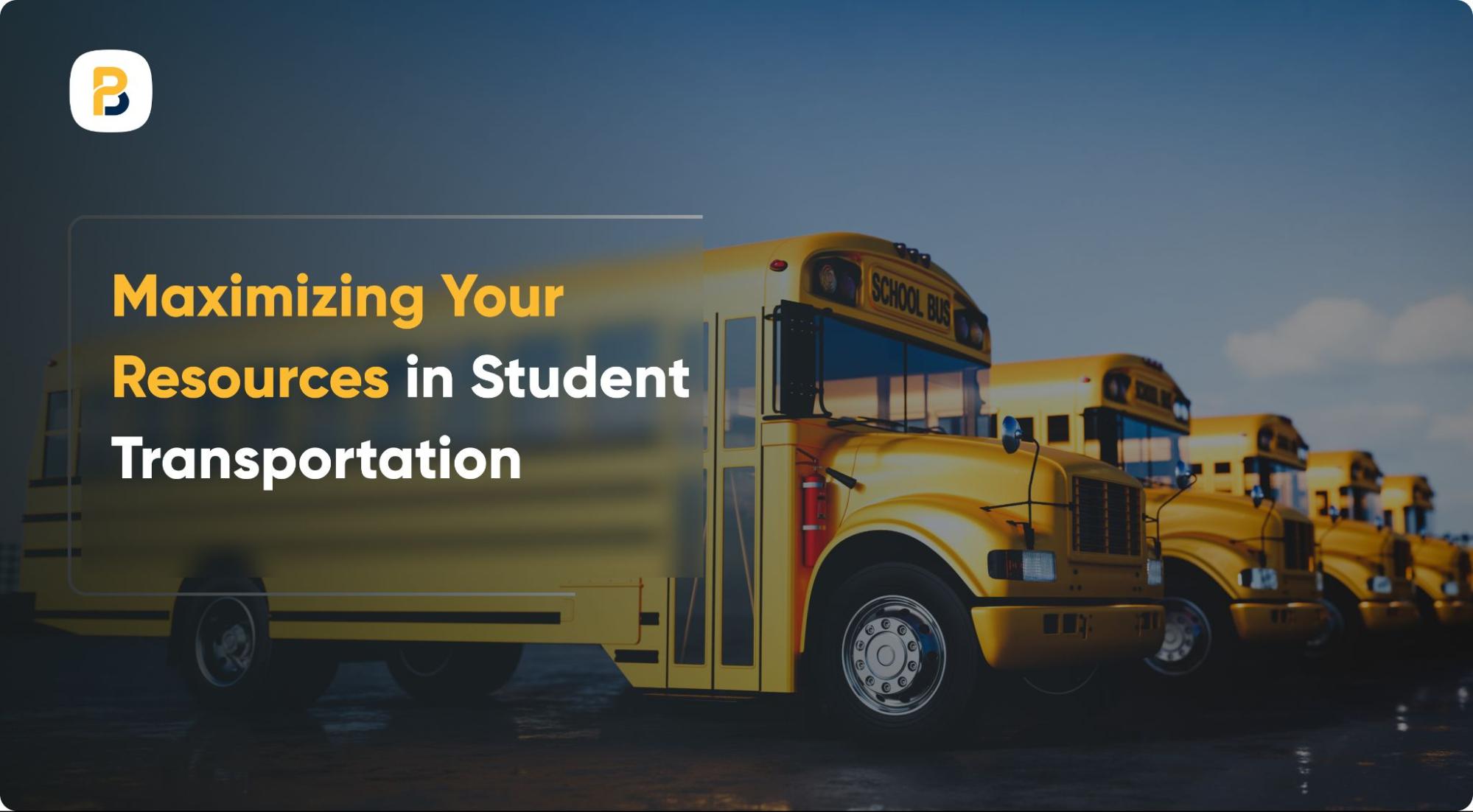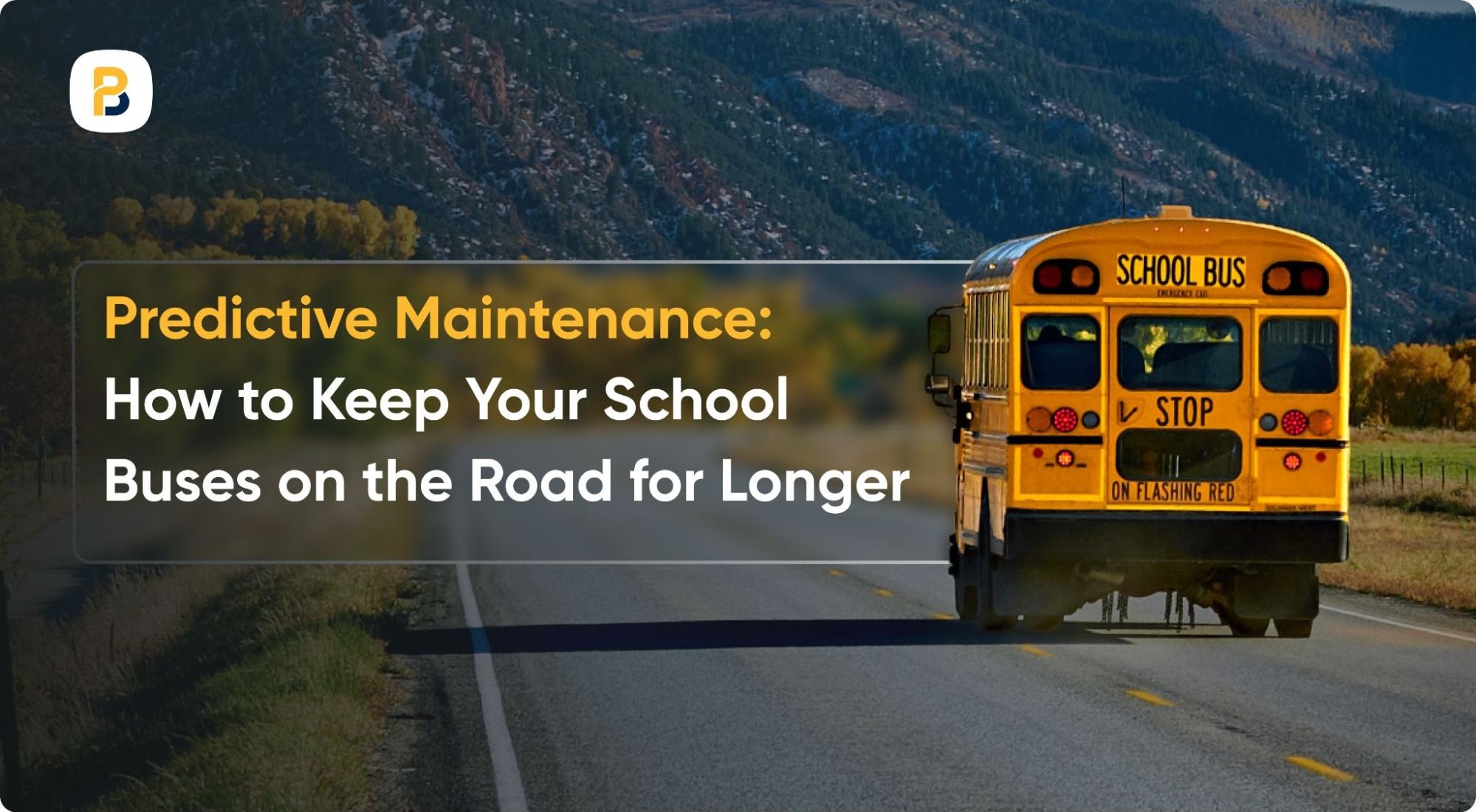Across North America, school transportation systems are navigating a set of ever-growing challenges, including a shrinking pool of qualified drivers, aging bus fleets, underfunding, and shifting ridership trends.
- Since 2019, the number of qualified school bus drivers has decreased by 12.2%, with public school bus driver employment dropping by 11.8% and private school bus driver employment declining by 12.2%.
- A BusPlanner survey revealed that 77% of school districts face significant operational challenges due to driver shortages.
Aging fleets and staffing gaps continue to cause route delays, operational cost spikes, and mounting frustration among families.
The good news? Strategically managing existing resources can help districts maintain and even improve service quality despite current constraints.
1. Optimize Your Existing Workforce
Retaining and empowering current drivers is far more cost-effective than continually recruiting new ones. By giving them the right tools and recognition, districts can reduce turnover and boost morale.
Retaining existing talent has become more important than ever, as the school bus driver shortage continues to impede student transportation operations across North America.
Here are some ways you can optimize your existing workforce:
- Leverage GPS to Reduce Daily: School bus GPS software takes the stress out of daily operations. Drivers receive real-time mobile updates that instantly adapt to route changes, eliminating last-minute paper chaos. Dispatchers can track buses in real-time and view accurate ETAs, making quick, informed decisions easier than ever.
- Use Dispatch to Cover Absences Seamlessly: When a driver is unavailable, school bus dispatch software allows their route to be quickly reassigned to another available driver directly from the dispatch dashboard. The system provides a clear overview of who is available, their proximity to runs, and where resources are needed most. This rapid reassignment keeps buses on the road, minimizes student delays, and reduces the operational scramble that can frustrate staff.

2. Maximize Fleet Efficiency
When new buses aren’t an option, you can still get more out of what you’ve got. Smart routing and preventive maintenance help you boost uptime, reliability, and rider satisfaction. Route optimization alone can reduce fuel consumption by up to 20%, resulting in significantly lower operating costs.
Breakdowns exacerbate shortages by unexpectedly sidelining buses. Comprehensive school bus fleet management software centralizes routing, maintenance, and vehicle tracking in a single platform, reducing administrative burden, preventing delays, and maximizing the productivity of every bus in the fleet.
3. Strategic Planning for Long-Term Success

Proactive planning is essential for sustainably overcoming student transportation challenges. By leveraging data, districts can identify inefficiencies, optimize routes, and forecast future needs, ensuring resources are allocated effectively.
Implementing predictive maintenance extends the lifespan of the fleet, while performance tracking helps tailor driver training and retention programs to improve overall fleet efficiency. A long-term strategy not only addresses today’s shortages but builds a resilient system for the future.
Conclusion
The challenges of driver shortages and aging fleets may seem daunting, but they also present an opportunity to rethink and revitalize student transportation systems. By optimizing existing resources, empowering drivers, and leveraging innovative technology, districts can transform these constraints into catalysts for innovation. With the right strategies, districts can ensure that every student arrives at school safely, on time, and ready to learn.
To optimize district transportation challenges, learn how a student transportation platform can help streamline routes, manage fleets, and support drivers. Contact us today!







